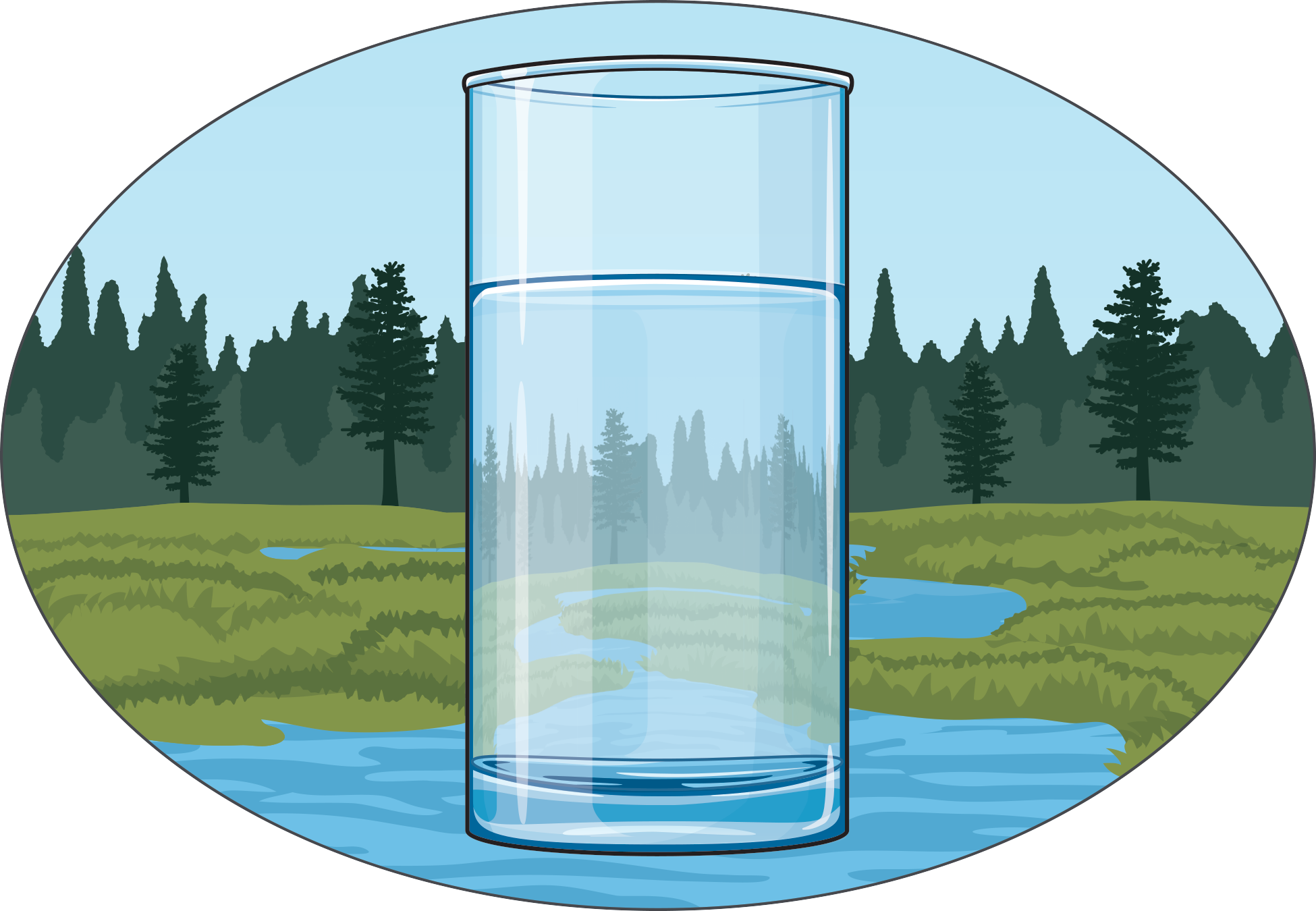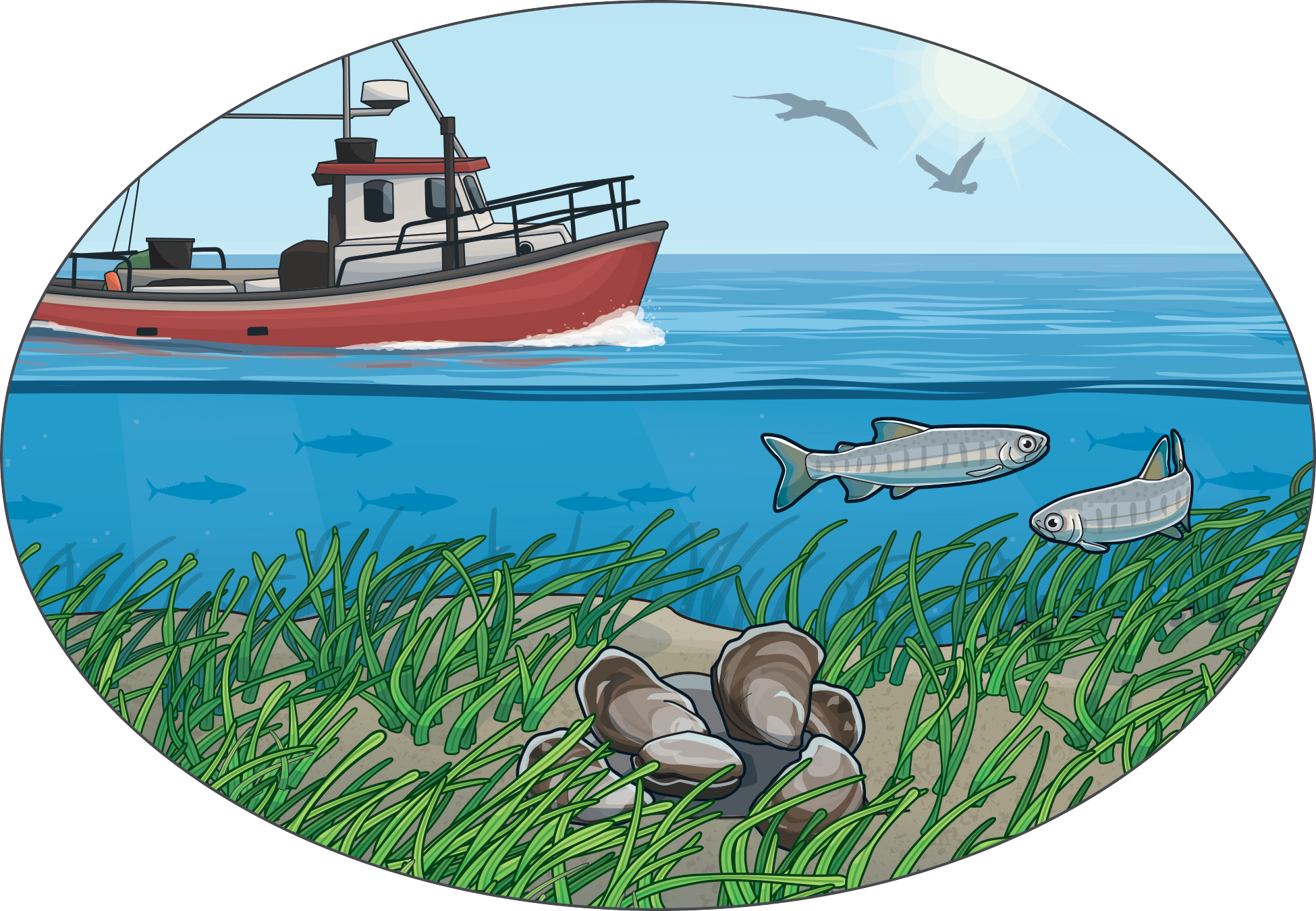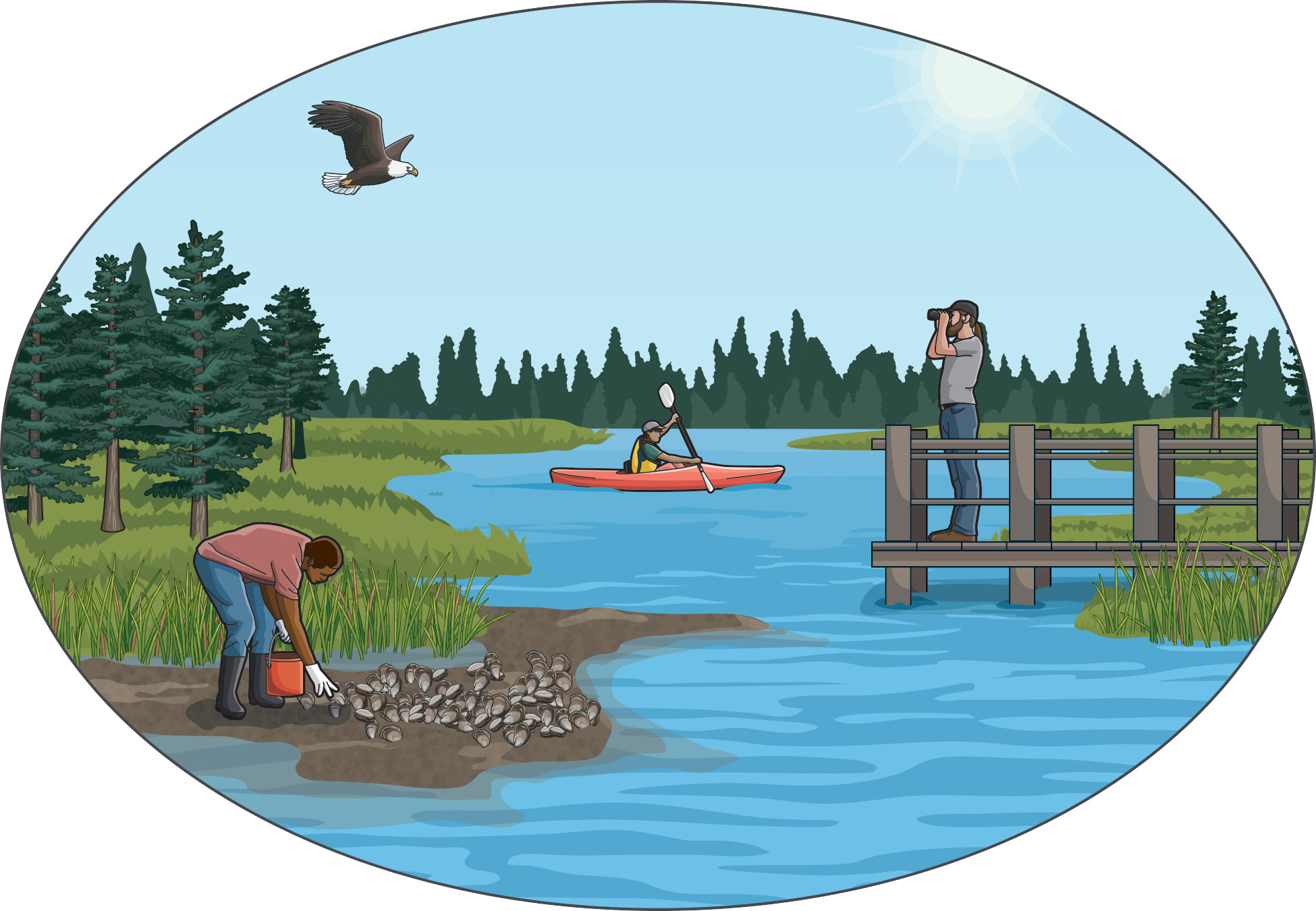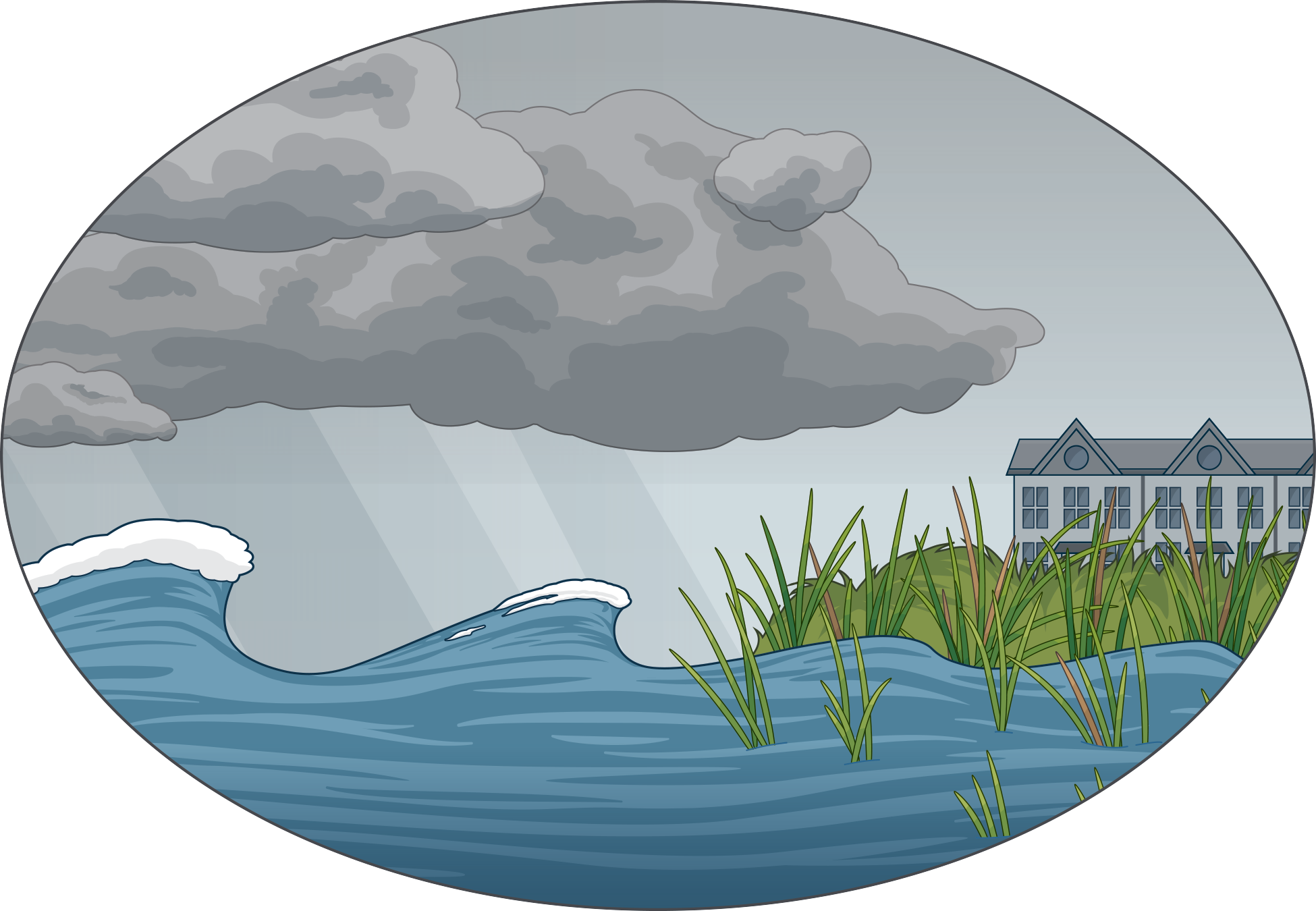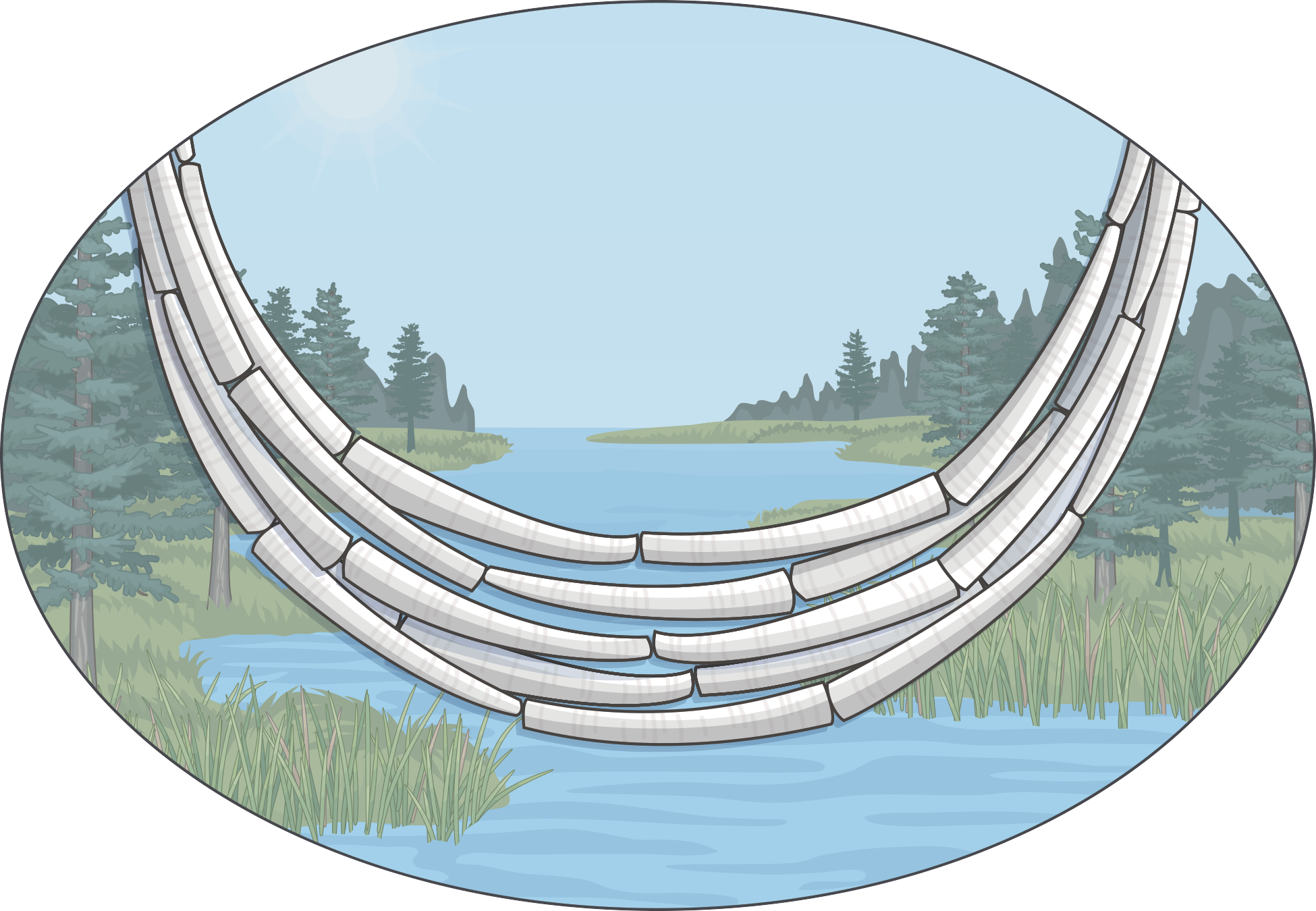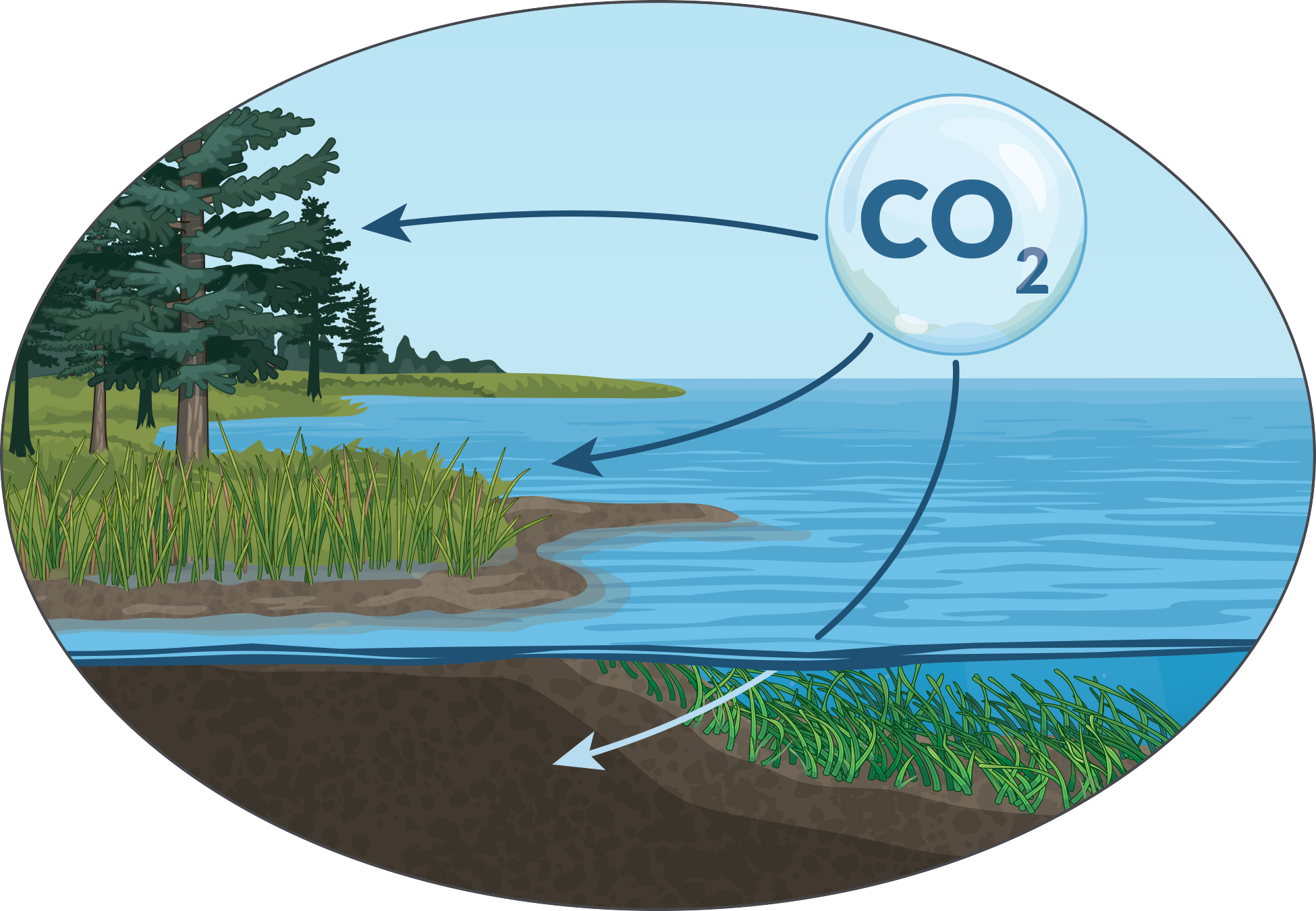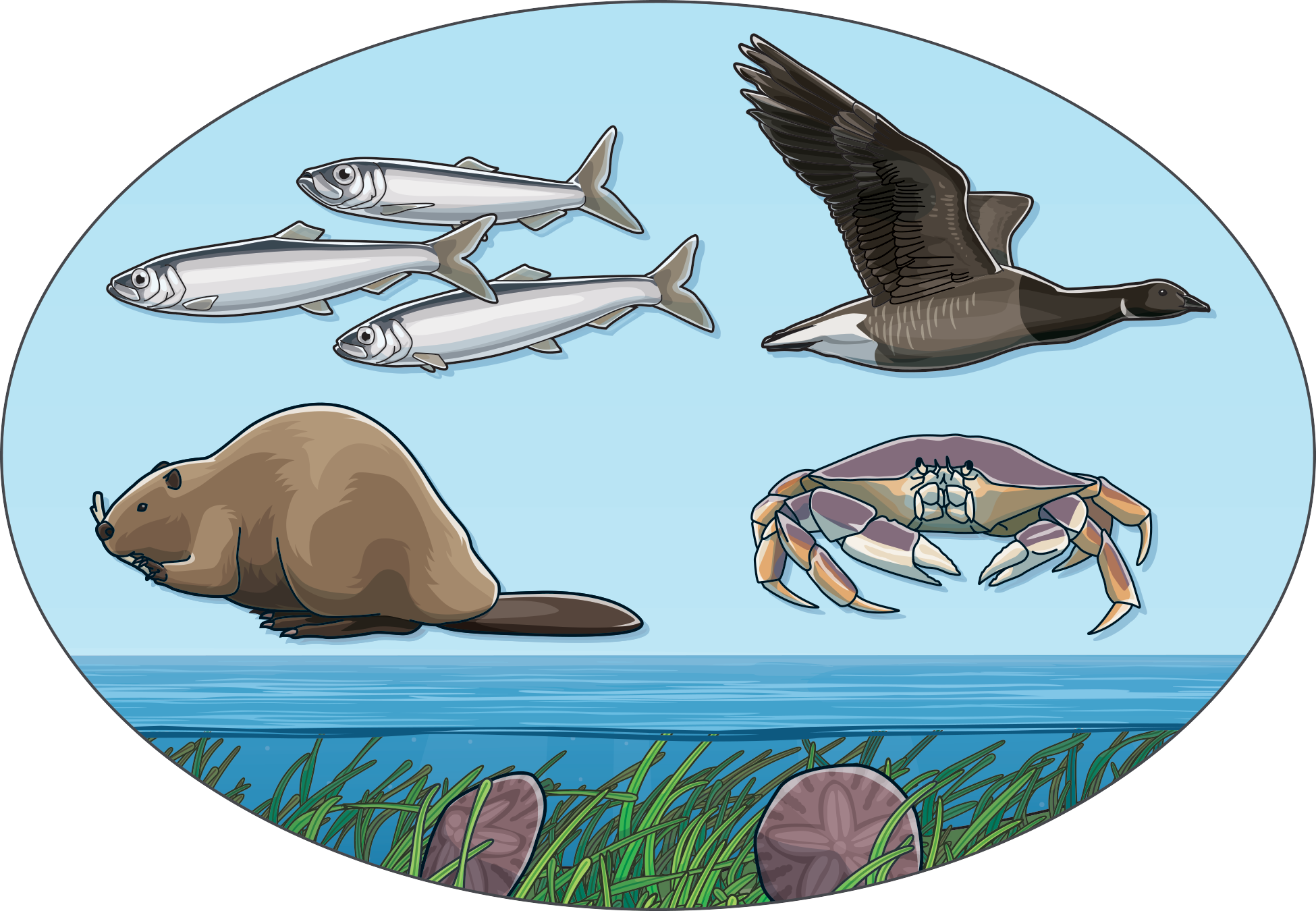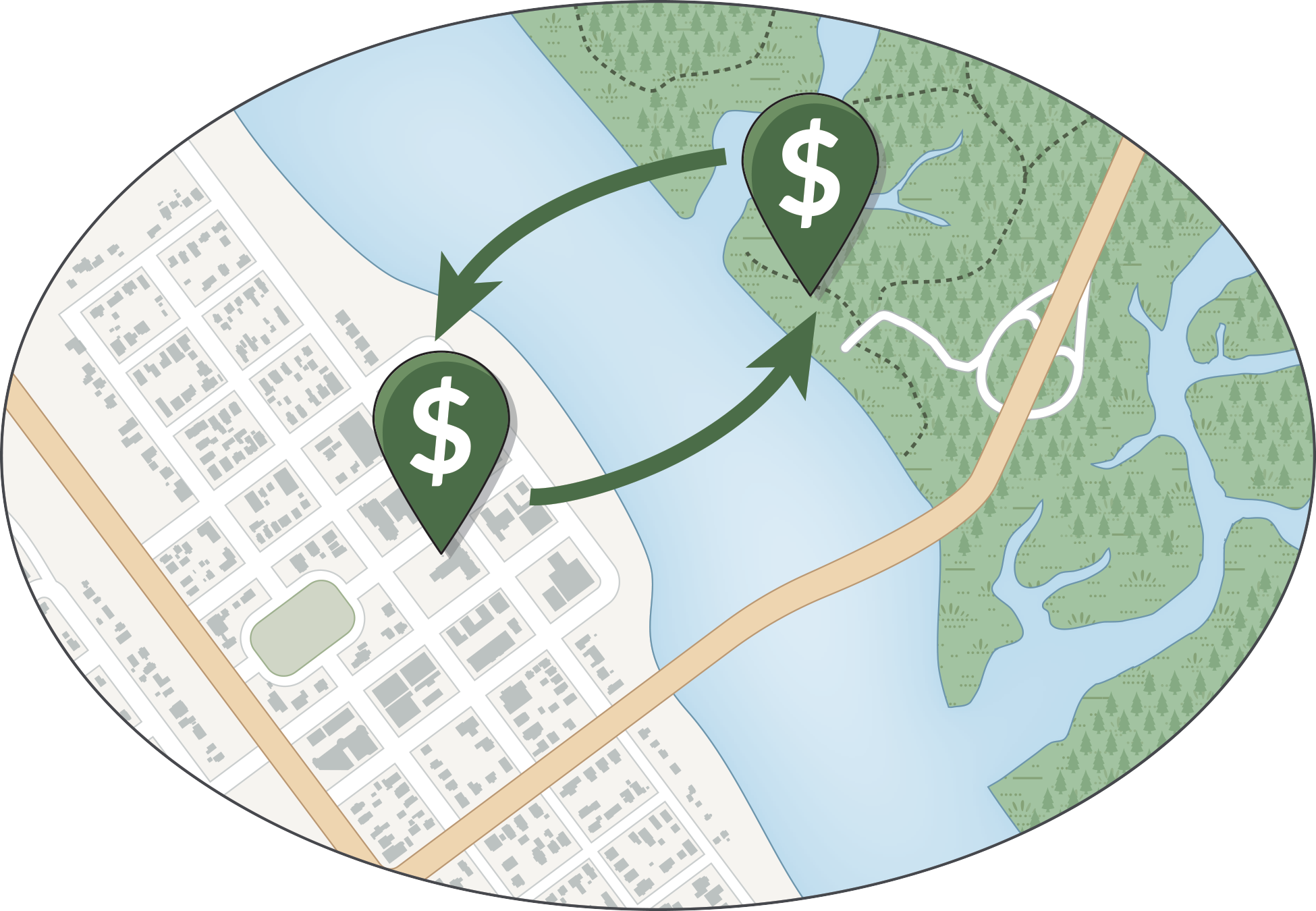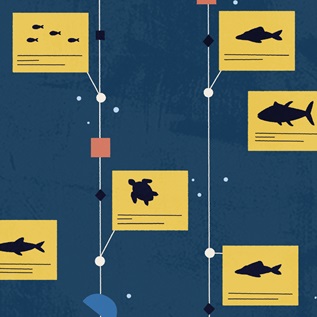9 Ways Estuaries Enhance Oregon’s Coastal Communities
Diverse habitats deliver essential benefits
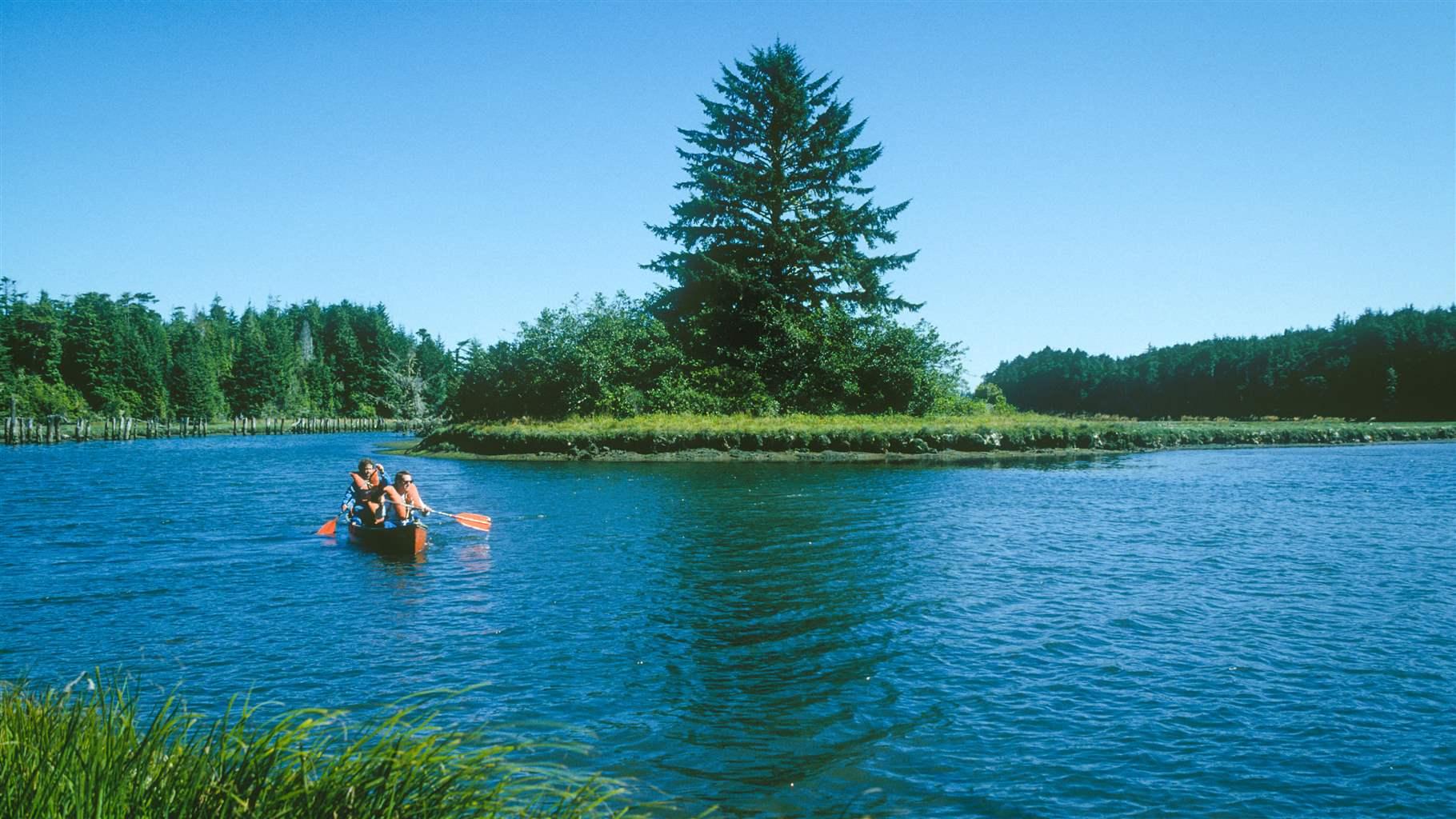
Overview
Estuaries, with their diverse habitats including salt marshes, forested tidal wetlands, and seagrass meadows, are among the most productive—and threatened—ecosystems on the planet. In Oregon, they link the state’s famed forests, rivers, and coasts and sustain marine wildlife, including salmon, seabirds, Dungeness crab, oysters, and forage fish—which, in turn, support Tribal Nations and Oregon’s economy. These areas also help reduce the effects of climate change by storing greenhouse gases, lessening the effects of ocean acidification, and safeguarding coastal communities from more intense and frequent storms and floods.
However, when degraded, estuaries not only lose their ability to serve these functions but also release greenhouse gases, some stored for thousands of years, back into the atmosphere. Ensuring healthy estuaries is a key goal for Oregon, where decades of pollution, development, and dredging have compromised many of these vital areas, harming habitats and damaging the cultural resources of coastal Indigenous peoples.
Estuary management in Oregon
Oregon manages its coastal resources through a system of estuary management plans (EMPs), which establish permissible uses for various portions of an estuary. The EMPs were a visionary accomplishment when first crafted in the 1980s. However, the plans have not changed in four decades, and the original development process did not involve Tribal Nations or address past uses and estuary degradation, including disturbance of cultural resources.
Updates to the plans are underway in some coastal communities, and the Oregon Coastal Management Program is creating guidance for localities on estuary planning for a changing climate and rising seas. Future EMPs will also have to address new knowledge and issues that have emerged over the past 40 years, including the federal listing of endangered salmon; the role of forage fish; the decline of adjacent habitat; and the economic and ecological importance of eelgrass meadows, salt marsh, forested tidal wetlands, and other coastal habitats.
Additionally, new plans will need to incorporate the latest science as well as state and federal policies, programs, and resource maps.
The success of these efforts requires that policymakers have a clear understanding of the ways in which estuaries can enhance the ability of ecosystems to endure changing conditions and bolster the economy while also honoring Tribal sovereignty and supporting vibrant coastal communities.
Clean water
Healthy estuaries are key to clean water in the coastal zone. Tidal wetlands and marshes remove sediments and pollutants, providing high-quality refuge for juvenile fish, including commercially important species, especially salmon, that depend on clear, cool water.1 And eelgrass meadows help lessen the local effects of ocean acidification and low oxygen, known as hypoxia.2
Fisheries
Estuaries serve as nurseries to more than 75% of all fish and shellfish harvested in the U.S. In Oregon, this includes salmon, steelhead trout, clams, oysters, and Dungeness crab, which in turn support more than 16,000 jobs.3 The National Marine Fisheries Service and the Pacific Fishery Management Council have designated many West Coast estuaries, with habitats such as eelgrass and salt marsh, as Essential Fish Habitat and Habitat Areas of Particular Concern for salmon, groundfish, and coastal pelagic species, including herring.4
Outdoor recreation
Kayaking, hiking, bird watching, and other outdoor activities play a major role in Oregon’s coastal economy. In 2019, locals and tourists spent a combined $5.61 billion on recreation in the region; generated $1.56 billion in wages and other compensation, $1.76 billion in gross domestic product contributions, and $201 million in state and local tax revenue; and supported 47,000 full- and part-time jobs.5
Flood and storm protection
An estuary’s coastal wetlands act as a natural sponge, absorbing floodwaters and helping to prevent inland inundation. They can lower overall flood heights and reduce wave strength, protecting people, property, infrastructure, and agriculture from devastating flood damages. The National Oceanic and Atmospheric Administration estimates that wetlands provide $23 billion worth of coastal protection every year.6
Culture and lifeways
Coastal Tribal Nations have stewarded Oregon’s estuaries since time immemorial. Estuaries are central to Tribes’ connection, practices, cultural identity, family, history, and lifeways. Current EMPs don’t address use and harvest of first foods, such as salmon and shellfish; archaeological or ceremonial sites; or the gathering of materials for medicine and traditional practice. For example, dentalia, marine mollusk shells traded widely by West Coast Tribes, are used in ceremonial regalia to symbolize wealth and identity.
Blue carbon
Estuarine habitats sequester carbon from the water and air in branches, leaves, roots, and soils. These stores are called “blue carbon” because they are in places where the land meets the sea. Oregon’s forested tidal wetlands store more carbon per acre than any other type of forest on Earth.7 And because sequestration increases over time in these habitats, for every thousand acres that are restored, about 212,500 metric tons of CO2 equivalent could be stored by 2050.8
Biodiversity
Oregon’s estuaries are critical breeding, nursery, and feeding areas for a wide variety of fish and wildlife, such as salmon, shorebirds, seabirds, and shellfish. Oysters and eelgrass—a flowering marine plant—both contribute to estuary health, particularly in light of ocean acidification.9 Eelgrass also constitutes about 80% of the diet of the black brant, a small migratory goose, and provides critical cover for juvenile Dungeness crab.10
Jobs and economic opportunities
Healthy estuaries create jobs and help Oregon’s fisheries and coastal economies. Habitat restoration projects support an average of 15 jobs per $1 million invested, and a recent study found that homes near a restoration project in Tillamook Bay, Oregon, increased in value by 10%.11 However, sea level rise poses multiple challenges to estuaries and coastal economies.12 New land use tools may provide opportunities for decision-makers to work with landowners and the private sector to conserve and restore areas susceptible to rising seas.13
Research and science jobs
Oregon’s coast is home to all the major types of estuaries and so attracts scientific inquiry and research with global implications. This also supports local jobs. For example, South Slough National Estuarine Research Reserve in the Coos estuary adds 65 jobs and $6.1 million in revenue to the region, and Hatfield Marine Science Center in Newport is one of the largest employers on the Oregon coast.14 In Lincoln County, the marine science sector increased 47% between 2004 and 2014.15
Endnotes
- L.S. Brophy, “Effectiveness Monitoring at Tidal Wetland Restoration and Reference Sites in the Siuslaw River Estuary: A Tidal Swamp Focus” (Green Point Consulting, 2009).
- Oregon Coordinating Council on Ocean Acidification and Hypoxia, “Oregon Ocean Acidification and Hypoxia Action Plan, 2019-2025 - Olympic and Pacific Oysters Species Spotlight” (2019), https://digital.osl.state.or.us/islandora/object/osl%3A906537.
- National Oceanic and Atmospheric Administration, “2017 Fisheries Economics of the United States” (2017), https://www.fisheries.noaa.gov/national/sustainable-fisheries/fisheries-economics-united-states.
- NOAA Fisheries, “Essential Fish Habitat on the West Coast,” last modified Sept. 8, 2021, https://www.fisheries.noaa.gov/west-coast/habitat-conservation/essential-fish-habitat-west-coast.
- Earth Economics, “Economic Analysis of Outdoor Recreation in Oregon” (2021), https://issuu.com/traveloregon2019/docs/economicanalysisofoutdoorrecreationinoregon_otc-ea.
- The Center for Clean Air Policy, “The Value of Green Infrastructure for Urban Climate Adaptation” (2011), https://www.cakex.org/sites/default/files/documents/The-Value-of-Green-Infrastructure-for-Urban-Climate-Adaptation_CCAP-Feb-2011.pdf.
- J.B. Kauffman et al., “Total Ecosystem Carbon Stocks at the Marine-Terrestrial Interface: Blue Carbon of the Pacific Northwest Coast, United States,” Global Change Biology 26, no. 10 (2020): 5679-92, https://doi.org/10.1111/gcb.15248.
- L. Beers et al., “Incorporating Coastal Blue Carbon Data and Approaches in Oregon’s First Generation Natural and Working Lands Proposal” (working paper, submitted to the Oregon Global Warming Commission July 2021), https://www.keeporegoncool.org/s/OR-NWL-bc-data-and-approaches-white-paper.pdf.
- M.L. Groner, “Oysters and Eelgrass: Potential Partners in a High pCO2 Ocean,” Ecology 99, no. 8 (2018): 1802-14, http://dx.doi.org/10.1002/ecy.2393.
- Oregon Sea Grant, “The Yaquina and Its Inhabitants” (2019), https://ir.library.oregonstate.edu/downloads/2j62sb623.
- G. Samonte et al., “Socioeconomic Benefits of Habitat Restoration” (National Marine Fisheries Service, Office of Habitat Conservation, 2017), https://repository.library.noaa.gov/view/noaa/15030; G.R. Shaw and S. Dundas, “Socio-Economic Impacts of the Southern Flow Corridor Restoration Project: Tillamook Bay, Oregon” (Tillamook Estuaries Partnership, 2021), https://ossfc.files.wordpress.com/2021/12/shawdundas_memooct2021_v3.pdf.
- Environmental Protection Agency, “Climate Adaptation and Estuaries,” accessed Dec. 10, 2021, https://www.epa.gov/arc-x/climate-adaptation-and-estuaries; L. Shi and A.M. Varuzzo, “Surging Seas, Rising Fiscal Stress: Exploring Municipal Fiscal Vulnerability to Climate Change,” Science Direct 100 (2020), https://doi.org/10.1016/j.cities.2020.102658.
- J. Grannis, “Adaptation Tool Kit: Sea-Level Rise and Coastal Land Use” (Georgetown Climate Center, 2011), https://www.georgetownclimate.org/files/report/Adaptation_Tool_Kit_SLR.pdf.
- Eastern Research Group Inc., “The Economic Contribution of the National Estuarine Research Reserves: A Pilot Study” (National Oceanic and Atmospheric Administration, 2021), https://coast.noaa.gov/data/digitalcoast/pdf/economic-contribution.pdf.
- The Research Group LLC, “Ten Year Update on Lincoln County, Oregon’s Economy” (2014), https://www.co.lincoln.or.us/planning/page/lincoln-county-economic-study.
